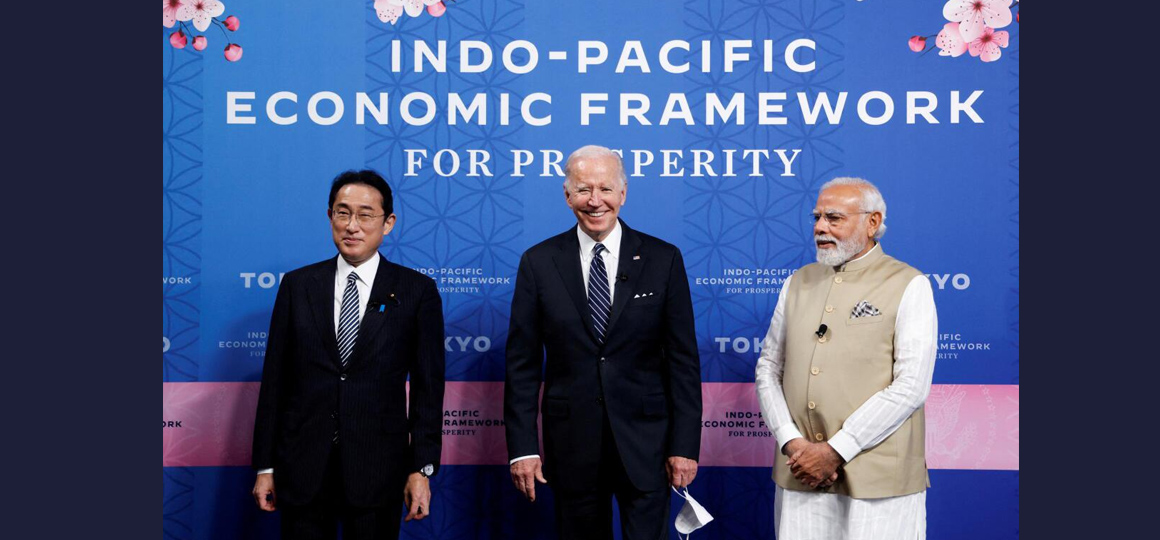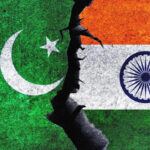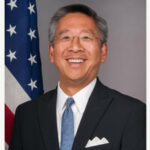With Asia already having major trade agreements in place, how is the IPEF different?
The story so far: The launch this week of U.S. President Joseph Biden’s new trade initiative for the region, the Indo-Pacific Economic Framework for Prosperity (IPEF), which was witnessed by leaders of 13 countries, including Prime Minister Narendra Modi, was heralded as the start of a new economic bloc in the region, one which could be seen as a counter to China. The IPEF, which comprises a “baker’s dozen” of Australia, Brunei, India, Indonesia, Japan, Republic of Korea, Malaysia, New Zealand, the Philippines, Singapore, Thailand, the United States and Vietnam, represents 40% of the world’s GDP. However, the launch of the IPEF has also been accompanied with some scepticism, not least from within the U.S., about just what it can deliver, given that officials made it clear that it is not a traditional trade deal.
What is the IPEF, if not a trade deal?
For the past few months, the Biden administration has been working with countries in the Indo-Pacific region to try and bring them on board with the idea of an alternative trading arrangement led by the U.S. The four pillars that the IPEF framework rests on are ‘Connected Economy’, setting standards on digital trade, cross-border data flows and data localisation; ‘Resilient Economy’, with supply chain commitments and guarding against price spikes; ‘Clean Economy’, with commitments on clean energy, decarbonisation, and infrastructure to cut emissions; and ‘Fair Economy’, in terms of enforcing regimes that cut down on money laundering and corruption, and ensure fair taxation. As a result, the IPEF is more about standard setting and facilitating trade and will not involve more market access for its members. Nor will it negotiate lower tariffs. Officials say as the negotiations proceed, they may incorporate more ideas, but have also stressed that members can take a “pick and choose” attitude towards joining only the pillars that interest them. While this concept has been developed in order to be more inclusive and attract more members, it also has raised questions about the seriousness of the U.S. proposition.
Why is the U.S. promoting this bloc?
The IPEF is part of the U.S.’s more than a decade old “Pivot to Asia” programme, re-imagining the Indo-Pacific as a geographic construct including America. The Quad, consisting India, Australia, Japan and the U.S., is part of the same pitch made originally by the Obama administration, and then re-energised by the Trump administration. The IPEF is also a way for the U.S. to keep its foot in the door on trade in Asia, after the Trump administration walked out of the 11-member Comprehensive and Progressive Agreement for Trans-Pacific Partnership (CPTPP, originally the TPP) in 2017 that includes Canada, Mexico and countries in Asia and South America (China has applied to be a member).
The U.S. is also not part of the other big trade bloc, the Regional Comprehensive Economic Partnership (RCEP), that includes China, all 10 members of the ASEAN, as well as Australia, Japan, New Zealand and South Korea, a deal India walked out of in 2019. By announcing a new arrangement that includes India, seven of 10 ASEAN members, and a majority of the RCEP members, the Biden administration is seeking to signal that it has not been cut out of trade in the region. The IPEF also clearly has a geopolitical edge — as it doesn’t include China, although the Biden administration stopped short of including Taiwan in the launch, as many U.S. Congress members had demanded.
Given that the U.S. itself is deeply divided on free trade issues, the U.S. Government has chosen not to make IPEF a trade deal, which would need congressional clearance. At a briefing just prior to the launch, U.S. Trade Representative Katherine Tai said the government had learnt a “strong lesson” from the TPP experience. “With respect to TPP, I think that the biggest problem with it was that we did not have the support at home to get it through…despite Herculean efforts, it could not be gotten through Congress,” Ms. Tai explained.
Finally, the IPEF is part of the Biden administration’s way of showing that despite its current focus on the war in Europe, and hot pursuit of Russia through economic sanctions, it has not lost sight that Asia, and the challenge from China, is prominent in the U.S. agenda.
What’s in it for India?
For the Modi government too, which walked out of the RCEP after eight years of negotiations, the membership of IPEF keeps it in the room on Asian trading arrangements, and is a way of blunting criticism that it is overtly protectionist. In the past year, the government has made a virtual U-turn from its previous antagonism towards bilateral trade agreements. It has concluded its first-ever trade deal in its tenure with the United Arab Emirates, and is in active negotiations to complete deals with the U.K., Australia and Canada.
The IPEF’s non-specific and flexible nature also suits India, which has held strong views on a range of issues like labour standards, environmental restrictions on fossil fuels, and data localisation.
Worldview with Suhasini Haidar | Quad Meeting: What did the leaders agree upon?
India’s inclusion also comes from a geopolitical need to counter China’s virtual control over Asian trade, given that the RCEP seeks to eliminate about 90% of tariffs amongst members, particularly given India’s bilateral issues with China since the 2020 transgressions by the Chinese army at the Line of Actual Control.
For the U.S., and other Quad members Japan and Australia, India’s inclusion, which had been tentative in the run-up to the IPEF launch, is important. Although India may not be an ideal participant under current conditions, its exclusion from the IPEF would raise questions about how ‘Indo’ the Indo-Pacific Economic Framework truly is,” remarked a brief on IPEF released by the Washington-based Center for Strategic and International Studies (CSIS) in April this year. It is significant that India is the only country in South Asia which has been invited to the grouping, and the U.S. plans to expand the membership further will be watched closely.
What’s China’s response to IPEF?
Clearly, China has been deeply critical of all U.S. initiatives in the region, as a part of a strategy to “contain China” . The Chinese government has accused the U.S. of building an “Asian NATO” in the Quad, of nuclearising the region through the Australia-U.K.-U.S. security pact AUKUS, and has also trained its guns on the IPEF, dismissing its utility, but also warning, as Chinese Foreign Ministry spokesperson Wang Wenbin did, that “many countries in the region are worried about the huge cost of ‘decoupling’ with China.”
“The U.S. is taking a selective approach in acceding to regional cooperation initiatives. Now the U.S. proposed the IPEF only to start something new to serve its own interests,” Mr. Wang said. Already, three members of ASEAN seen as closest to China: Myanmar, Cambodia and Laos, have chosen not to join IPEF.
What about other criticisms of the arrangement?
The biggest criticism of IPEF in other capitals in Asia is that it is still too vague and lacks enough substance. Indian officials said India’s participation as an “initial founder” means that it will go along with the negotiations and see where they lead, but, like with RCEP, joining the launch is not the same as joining the eventual IPEF agreement negotiated, and much will depend on whether India’s specific red-lines on market protection and services are included.
There is also some scepticism of U.S. initiatives that don’t carry any “dollar value”. With market access to U.S. and tariff reductions off the table, there are questions about how much “skin in the game” Washington will bring. Previous initiatives like the Blue Dot Network, and the Build Back World initiative with G-7 partners have not brought in the sort of funding required for emerging economies in the region. A Quad initiative for $50 billion in financing infrastructure projects over five years seems unambitious, compared to U.S. spending in other regions, and even on Ukraine in the past few months.
Finally, in selling the IPEF back home in Washington, the U.S. appears to be making the deal more about benefits to the U.S. economy than to the Indo-Pacific region as a whole. U.S. National Security Adviser Jake Sullivan’s remarks in a press briefing, that the “IPEF is part of President Biden’s commitment to putting American families and workers at the centre of [U.S.] economic and foreign policy, while strengthening our ties with allies and partners for the purpose of increasing shared prosperity,” raised eyebrows.






NO COMMENT